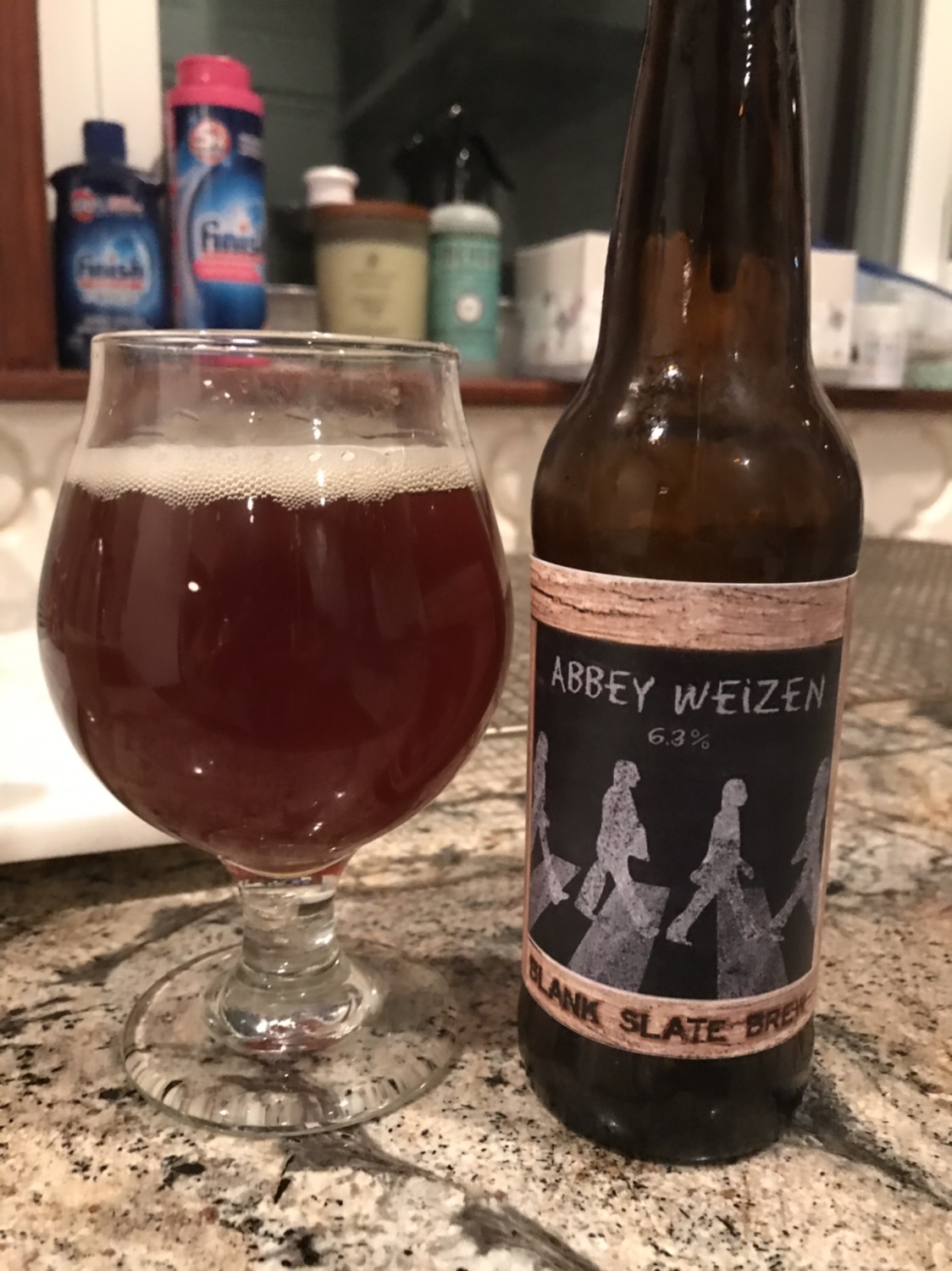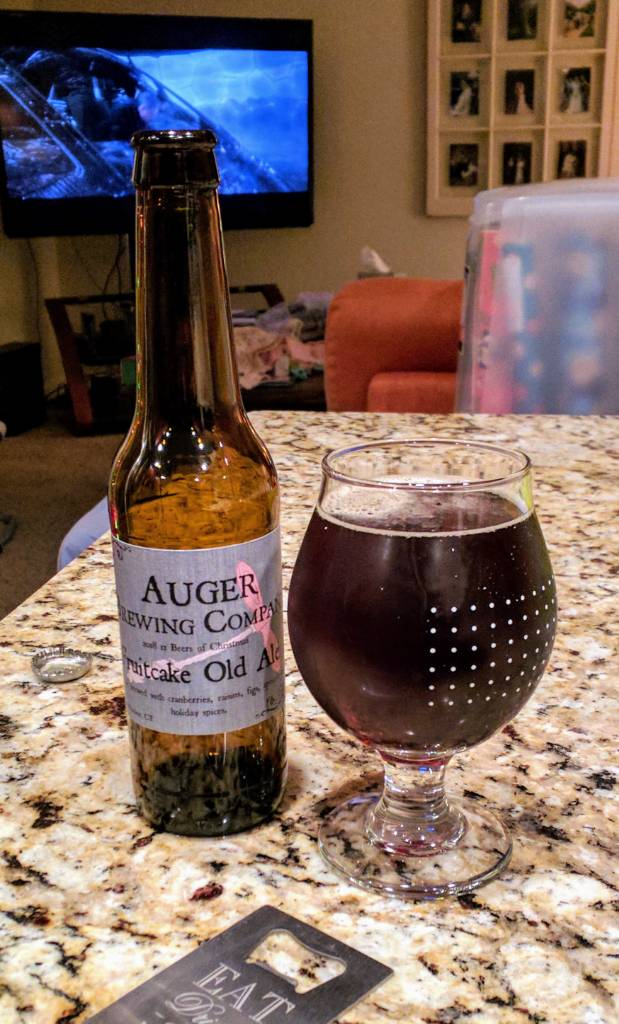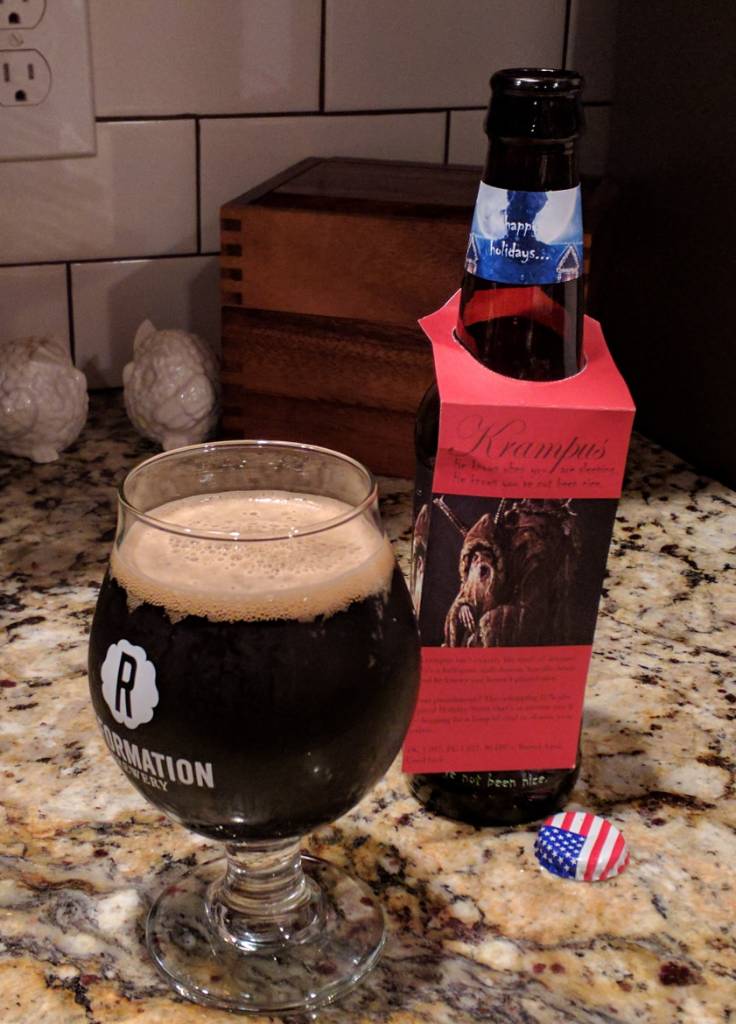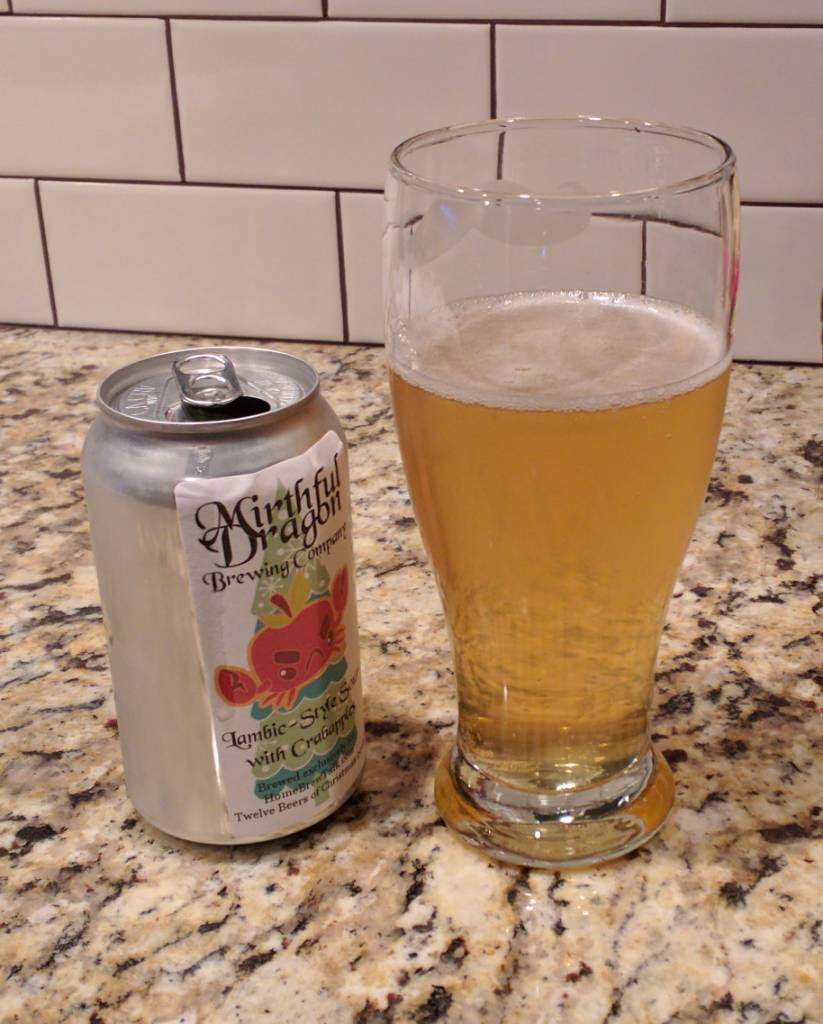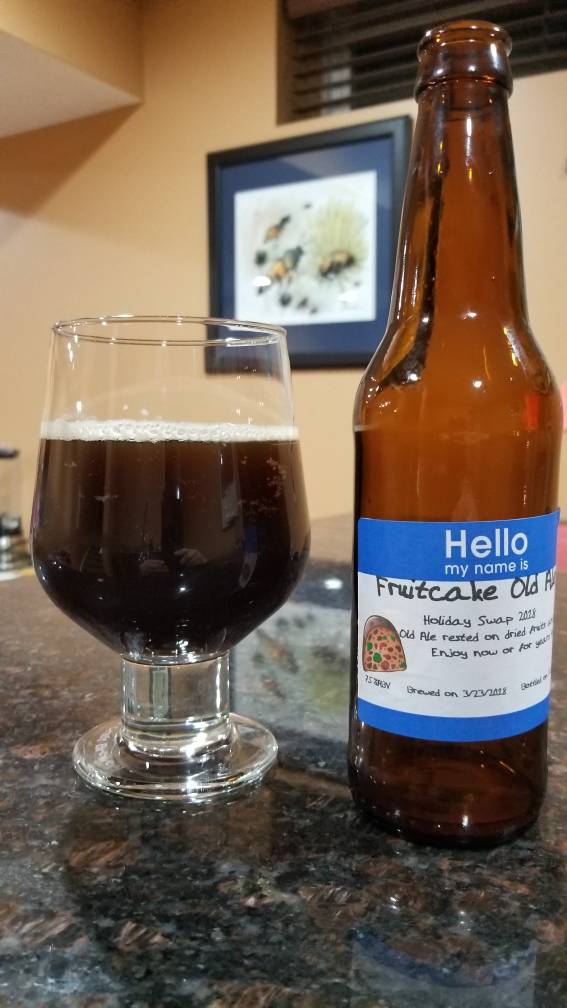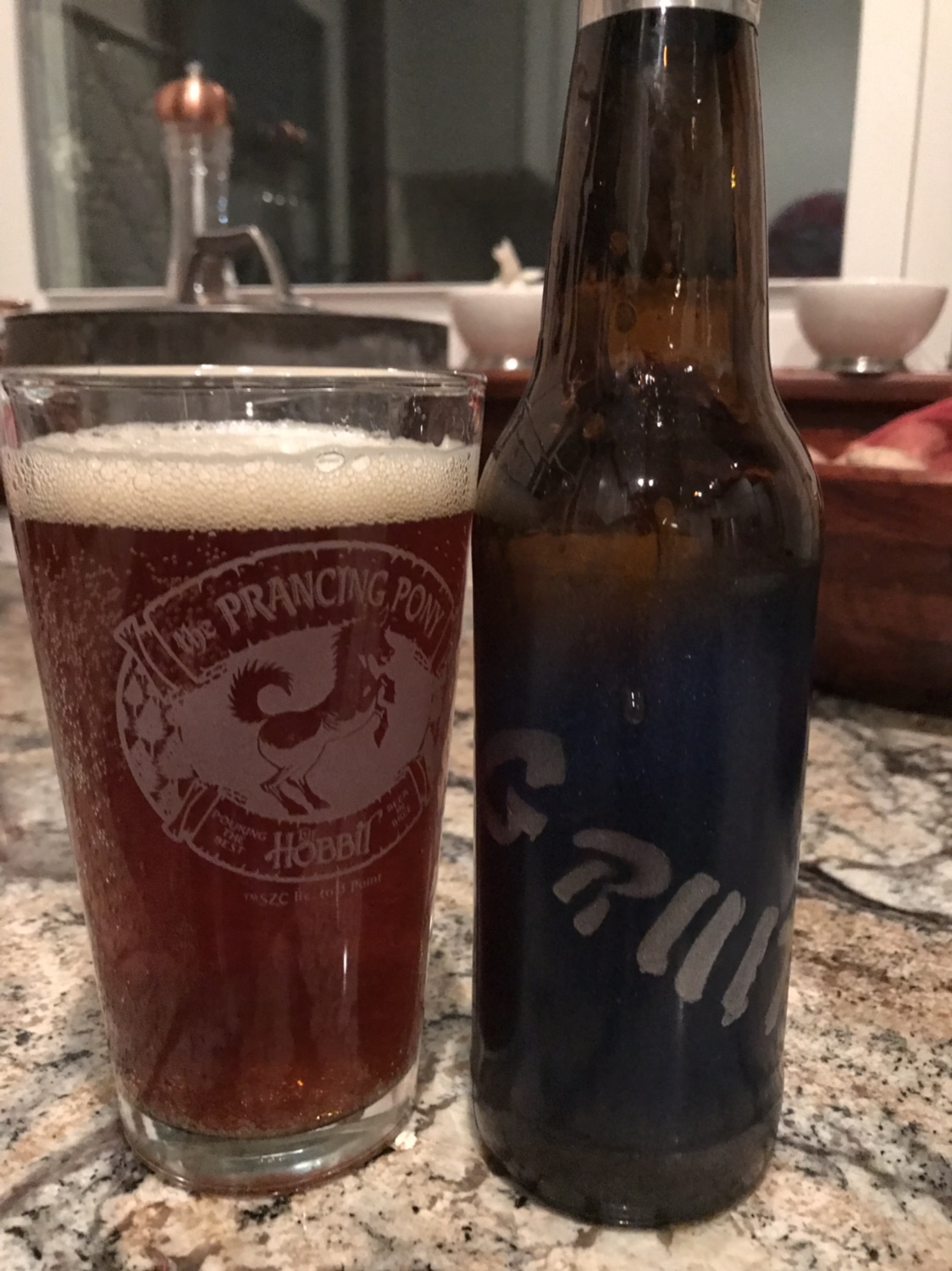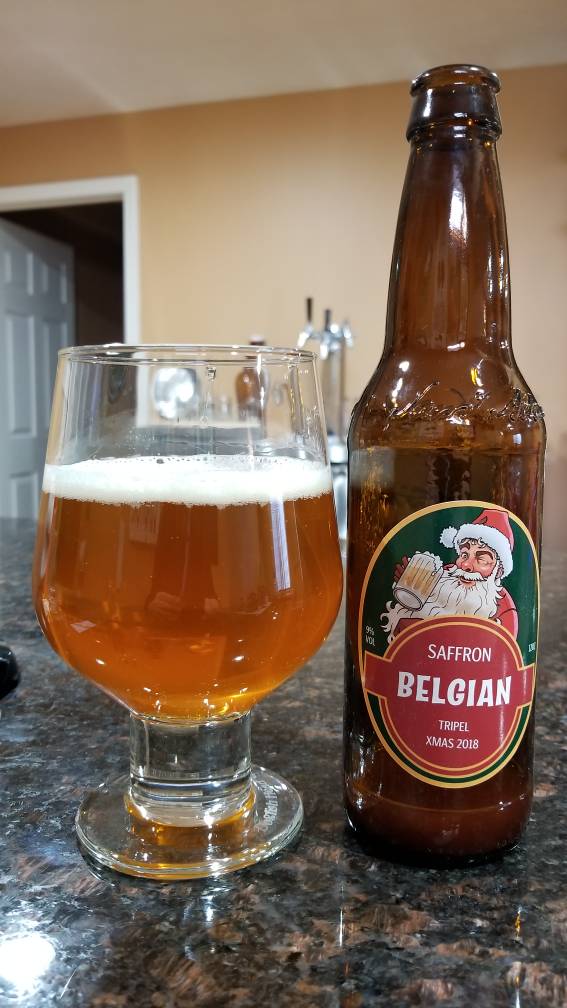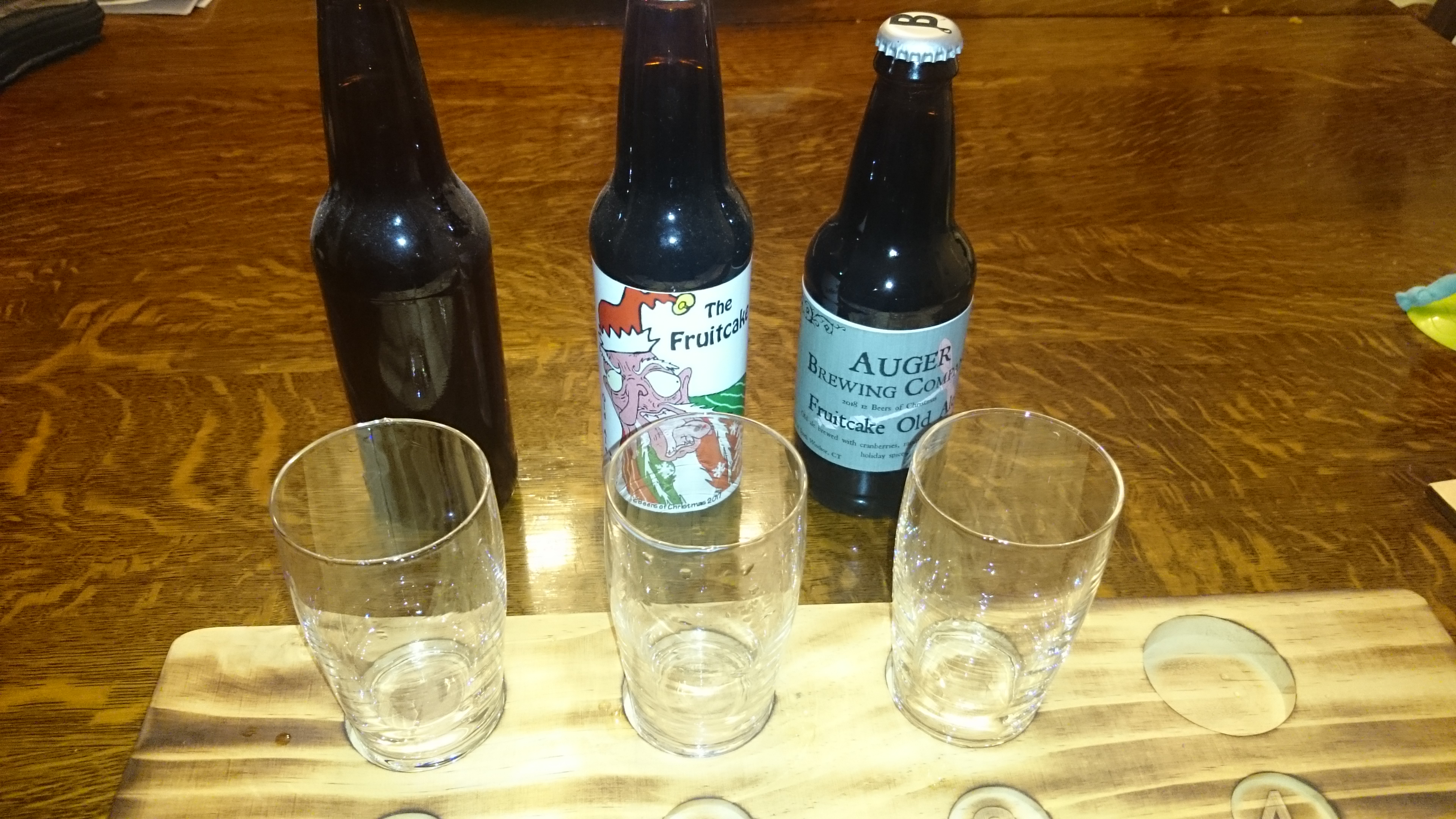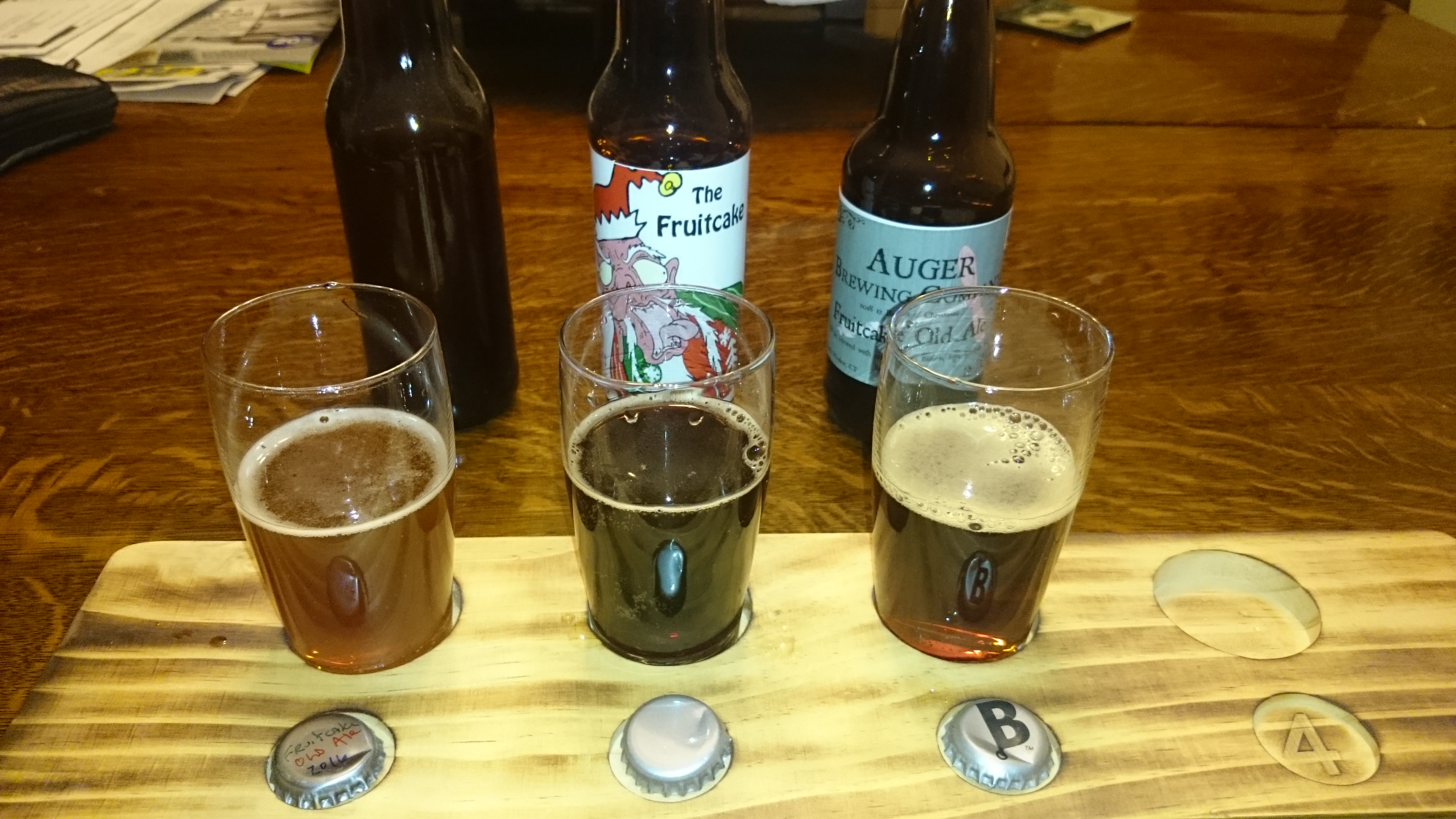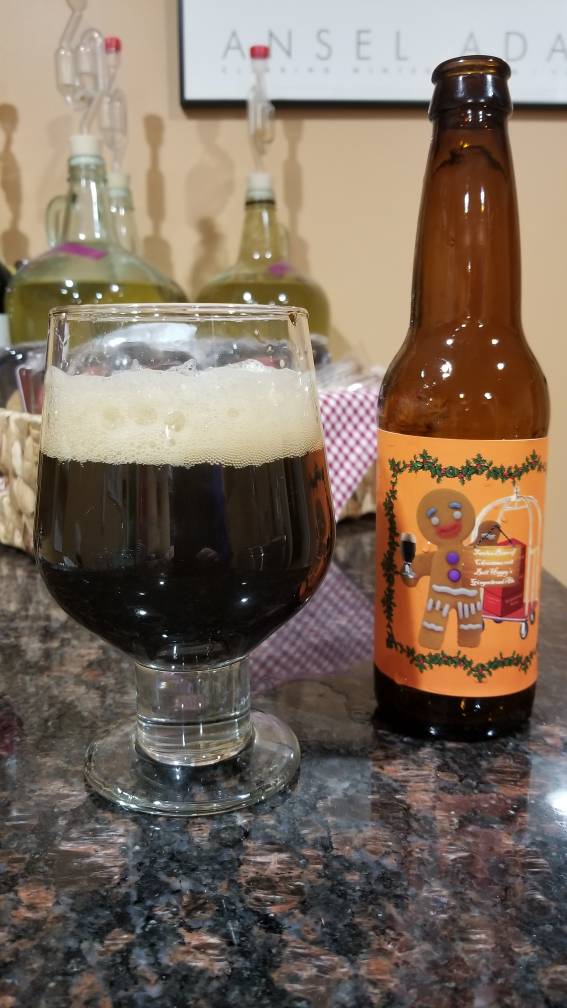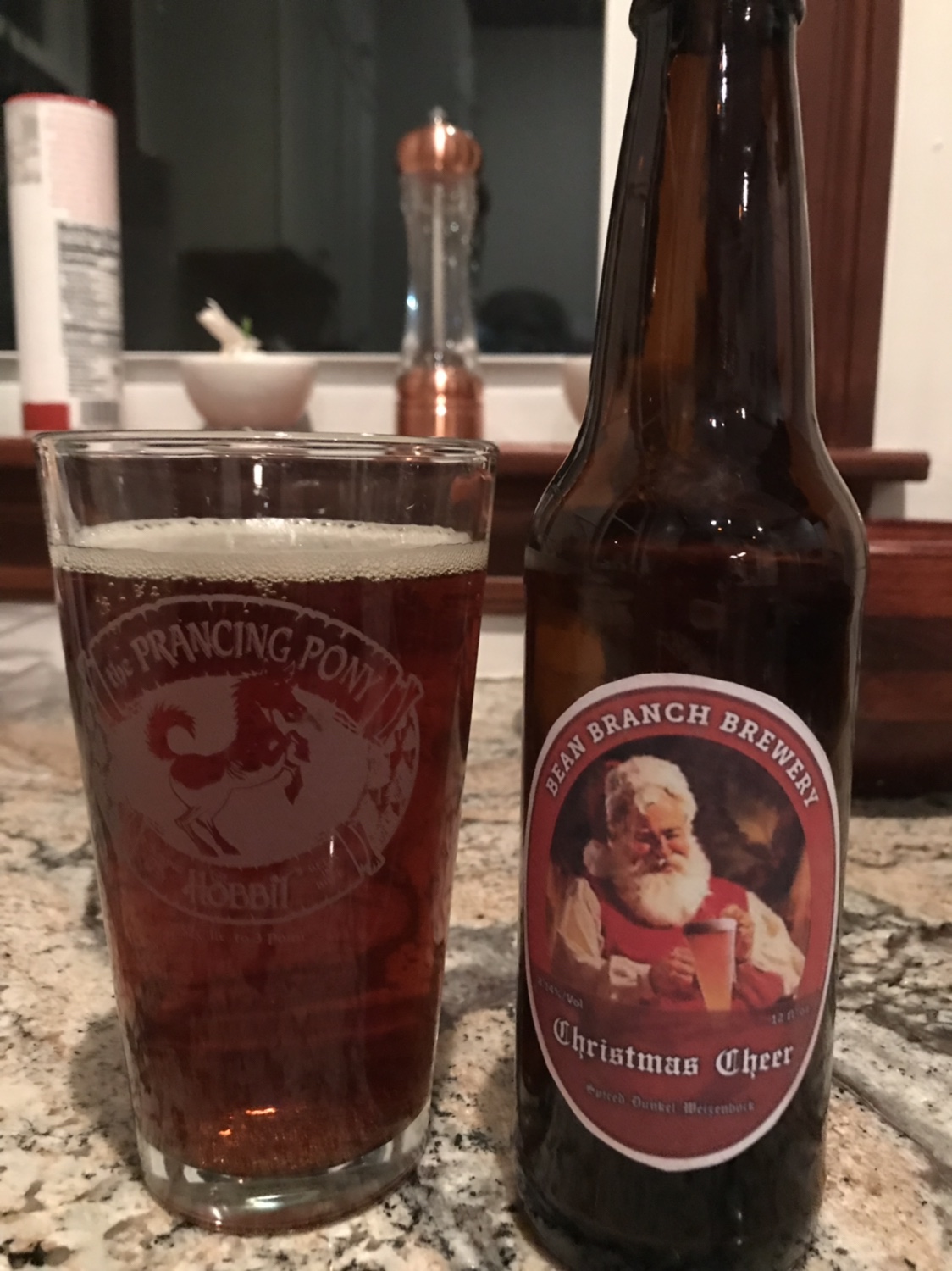So this was my third year doing this swap, and I still have some beers from 2016 left. I did a vertical tasting of sorts with the Fruitcake Old Ale to compare the products of several different brewers using the same (ish) basic recipe. Below are the 2016, 2017 and 2018 fruitcake old ales, brewed by biochemedic, JDXX1971, and myself, respectively.
Here are the three beers, 2016-2018, left to right.
The 2016 by
@biochemedic was definitely the lightest in color of the the three, with a light reddish copper color and moderate haze and a fine, white head that dissipated quickly - to be expected given the age of the beer. There was a light alcohol aroma coupled with moderate bready malt notes. No hop character of note, and the fruit aromas were there in a general, subtle way without any one specific character being prevalent.
Mouthfeel was a pretty light-bodied beer with a moderate, vinous acidity - something akin to drinking a chardonnay, which was interesting and pleasant. The fruit came forward in the flavor, with strong dark cherry and raisin notes. The vinous character persisted in the taste (in a pleasing way) and gave the beer a certain crispness to it which nicely set off the round fruit and malt flavors.
The 2017 by
@JDXX1971 was definitely the darkest and biggest beer of the three. It poured very dark with beautiful ruby highlights and very good clarity. Aroma presented with strong raisiny notes followed by low levels of rich, bready malt, melanoidins and dark cherry notes.
Taste and mouthfeel...this beer was a mouthful..big, heavy and rich with dark dried fruit notes. No hop flavor or bitterness at all, to be expected, and a slight oxidation note, also somewhat expected in a beer of this age and style.
My 2018 version was sort of in between these two in most ways. It also showed very good clarity in a coppery brown color. Very strong dark fruit notes of raisin and fig up front, followed by low levels of dense bready malt. This one actually had some brighter flavors and a low amount of hop bitterness, being the youngest beer of the three.
All in all it was really interesting to contrast and compare both how our different takes on the recipe and style turned out, as well as how the different amounts of aging have affected the beers.
In a related note, by the time I finished all three of these...I was tanked.























































![Craft A Brew - Safale BE-256 Yeast - Fermentis - Belgian Ale Dry Yeast - For Belgian & Strong Ales - Ingredients for Home Brewing - Beer Making Supplies - [3 Pack]](https://m.media-amazon.com/images/I/51bcKEwQmWL._SL500_.jpg)


